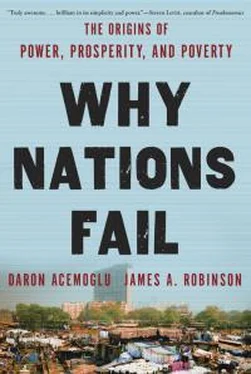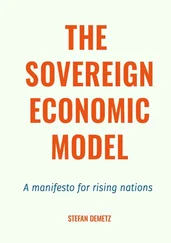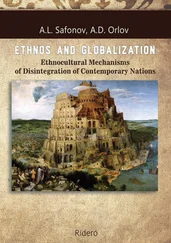The collapse of the Spanish state with the Napoleonic invasion created a constitutional crisis throughout colonial Latin America. There was much dispute about whether to recognize the authority of the Junta Central, and in response, many Latin Americans began to form their own juntas. It was only a matter of time before they began to sense the possibility of becoming truly independent from Spain. The first declaration of independence took place in La Paz, Bolivia, in 1809, though it was quickly crushed by Spanish troops sent from Peru. In Mexico the political attitudes of the elite had been shaped by the 1810 Hidalgo Revolt, led by a priest, Father Miguel Hidalgo. When Hidalgo’s army sacked Guanajuato on September 23, they killed the intendant, the senior colonial official, and then started indiscriminately to kill white people. It was more like class or even ethnic warfare than an independence movement, and it united all the elites in opposition. If independence allowed popular participation in politics, the local elites, not just Spaniards, were against it. Consequentially, Mexican elites viewed the Cádiz Constitution, which opened the way to popular participation, with extreme skepticism; they would never recognize its legitimacy.
In 1815, as Napoleon’s European empire collapsed, King Ferdinand VII returned to power and the Cádiz Constitution was abrogated. As the Spanish Crown began trying to reclaim its American colonies, it did not face a problem with loyalist Mexico. Yet, in 1820, a Spanish army that had assembled in Cádiz to sail to the Americas to help restore Spanish authority mutinied against Ferdinand VII. They were soon joined by army units throughout the country, and Ferdinand was forced to restore the Cádiz Constitution and recall the Cortes. This Cortes was even more radical than the one that had written the Cádiz Constitution, and it proposed abolishing all forms of labor coercion. It also attacked special privileges—for example, the right of the military to be tried for crimes in their own courts. Faced finally with the imposition of this document in Mexico, the elites there decided that it was better to go it alone and declare independence.
This independence movement was led by Augustín de Iturbide, who had been an officer in the Spanish army. On February 24, 1821, he published the Plan de Iguala, his vision for an independent Mexico. The plan featured a constitutional monarchy with a Mexican emperor, and removed the provisions of the Cádiz Constitution that Mexican elites found so threatening to their status and privileges. It received instantaneous support, and Spain quickly realized that it could not stop the inevitable. But Iturbide did not just organize Mexican secession. Recognizing the power vacuum, he quickly took advantage of his military backing to have himself declared emperor, a position that the great leader of South American independence Simón Bolivar described as “by the grace of God and of bayonets.” Iturbide was not constrained by the same political institutions that constrained presidents of the United States; he quickly made himself a dictator, and by October 1822 he had dismissed the constitutionally sanctioned congress and replaced it with a junta of his choosing. Though Iturbide did not last long, this pattern of events was to be repeated time and time again in nineteenth-century Mexico.
The Constitution of the United States did not create a democracy by modern standards. Who could vote in elections was left up to the individual states to determine. While northern states quickly conceded the vote to all white men irrespective of how much income they earned or property they owned, southern states did so only gradually. No state enfranchised women or slaves, and as property and wealth restrictions were lifted on white men, racial franchises explicitly disenfranchising black men were introduced. Slavery, of course, was deemed constitutional when the Constitution of the United States was written in Philadelphia, and the most sordid negotiation concerned the division of the seats in the House of Representatives among the states. These were to be allocated on the basis of a state’s population, but the congressional representatives of southern states then demanded that the slaves be counted. Northerners objected. The compromise was that in apportioning seats to the House of Representatives, a slave would count as three-fifths of a free person. The conflicts between the North and South of the United States were repressed during the constitutional process as the three-fifths rule and other compromises were worked out. New fixes were added over time—for example, the Missouri Compromise, an arrangement where one proslavery and one antislavery state were always added to the union together, to keep the balance in the Senate between those for and those against slavery. These fudges kept the political institutions of the United States working peacefully until the Civil War finally resolved the conflicts in favor of the North.
The Civil War was bloody and destructive. But both before and after it there were ample economic opportunities for a large fraction of the population, especially in the northern and western United States. The situation in Mexico was very different. If the United States experienced five years of political instability between 1860 and 1865, Mexico experienced almost nonstop instability for the first fifty years of independence. This is best illustrated via the career of Antonio López de Santa Ana.
Santa Ana, son of a colonial official in Veracruz, came to prominence as a soldier fighting for the Spanish in the independence wars. In 1821 he switched sides with Iturbide and never looked back. He became president of Mexico for the first time in May of 1833, though he exercised power for less than a month, preferring to let Valentín Gómez Farías act as president. Gómez Farías’s presidency lasted fifteen days, after which Santa Ana retook power. This was as brief as his first spell, however, and he was again replaced by Gómez Farías, in early July. Santa Ana and Gómez Farías continued this dance until the middle of 1835, when Santa Ana was replaced by Miguel Barragán. But Santa Ana was not a quitter. He was back as president in 1839, 1841, 1844, 1847, and, finally, between 1853 and 1855. In all, he was president eleven times, during which he presided over the loss of the Alamo and Texas and the disastrous Mexican-American War, which led to the loss of what became New Mexico and Arizona. Between 1824 and 1867 there were fifty-two presidents in Mexico, few of whom assumed power according to any constitutionally sanctioned procedure.
The consequence of this unprecedented political instability for economic institutions and incentives should be obvious. Such instability led to highly insecure property rights. It also led to a severe weakening of the Mexican state, which now had little authority and little ability to raise taxes or provide public services. Indeed, even though Santa Ana was president in Mexico, large parts of the country were not under his control, which enabled the annexation of Texas by the United States. In addition, as we just saw, the motivation behind the Mexican declaration of independence was to protect the set of economic institutions developed during the colonial period, which had made Mexico, in the words of the great German explorer and geographer of Latin America Alexander von Humbolt, “the country of inequality.” These institutions, by basing the society on the exploitation of indigenous people and the creation of monopolies, blocked the economic incentives and initiatives of the great mass of the population. As the United States began to experience the Industrial Revolution in the first half of the nineteenth century, Mexico got poorer.
HAVING AN IDEA, STARTING A FIRM, AND GETTING A LOAN
Читать дальше












